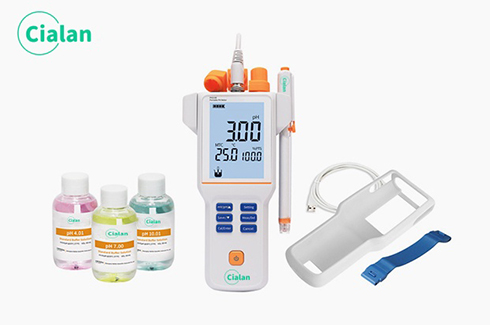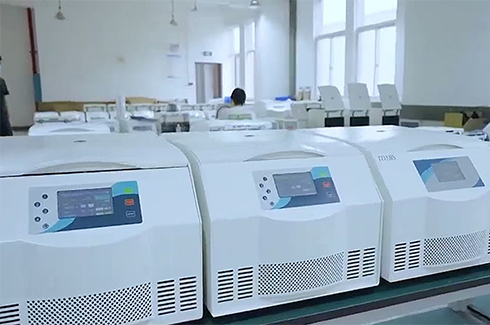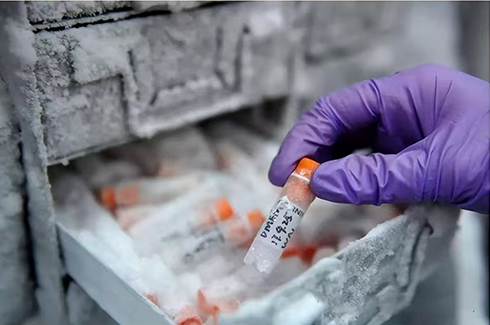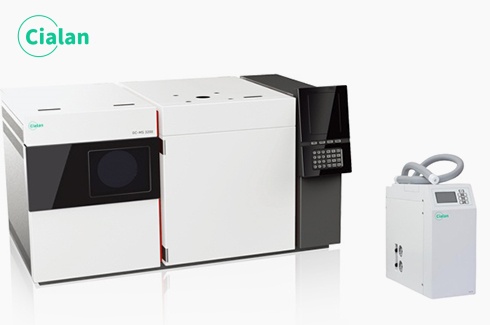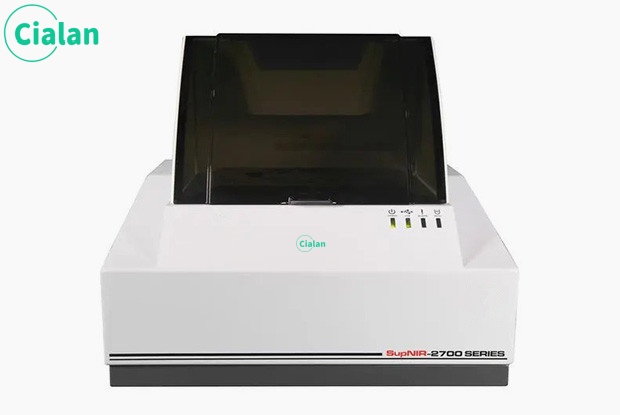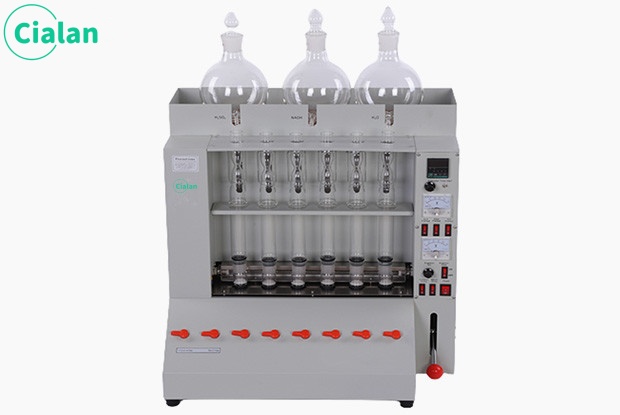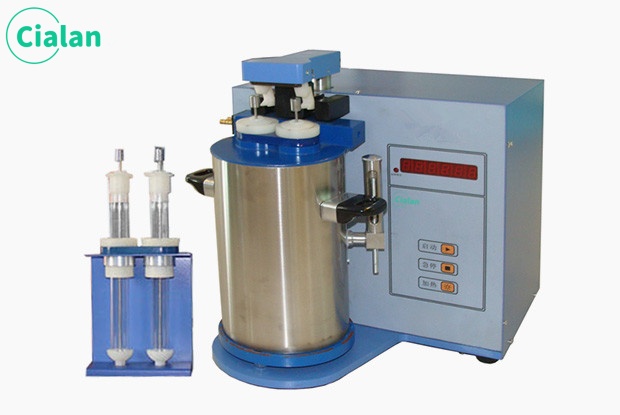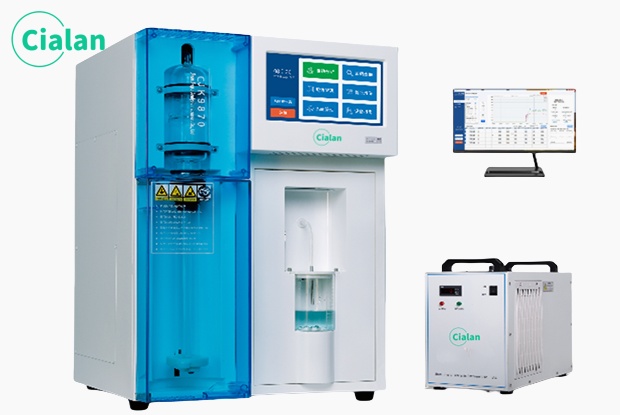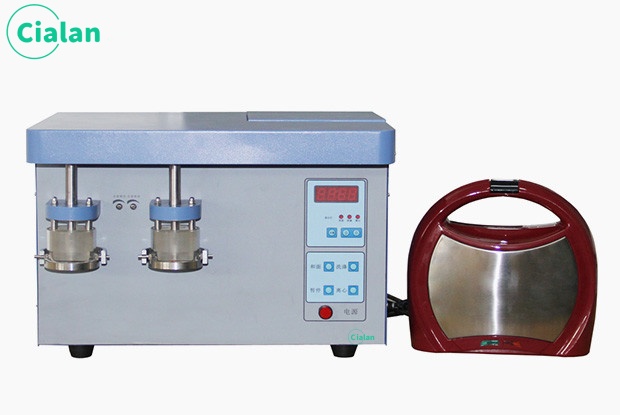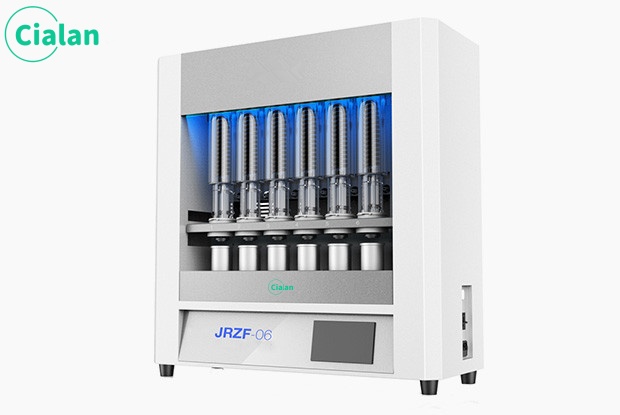How do you determine crude fat?
Components of a crude fat analyzer.
Heating extraction, solvent collection and cooling.
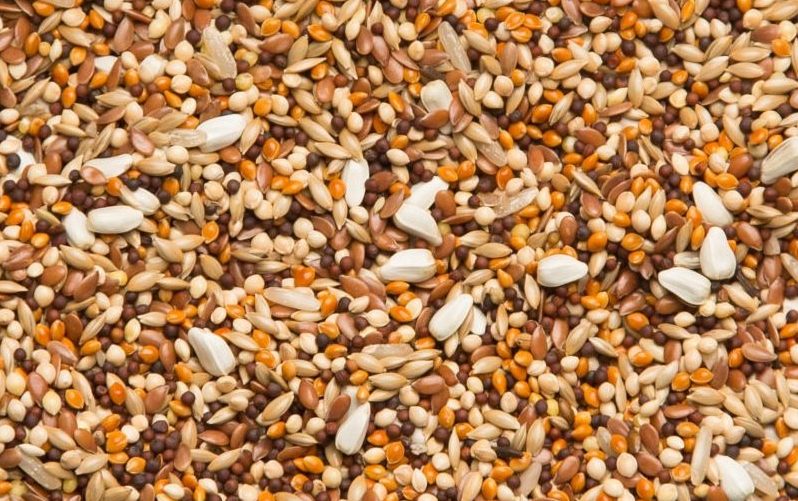
The function of fat analyzer.
1. The fat analyzer is mainly used to measure fat content by gravimetric method. It is a special equipment used to determine the quality determination index and fatty acid value of grains (including corn and rice). It is also suitable for the determination of fatty acid values of other grains and grain products. Fat can be dissolved in specific organic solvents. Through repeated extraction, the fat is finally separated, and then dried and weighed to calculate the fat content.
2. The fat meter can measure the crude fiber content in various grains, feeds, grains, foods and other agricultural and sideline products. However, the fiber meter on the market does not measure an exact chemical entity, but a kind of The general composition is mainly cellulose, with a small amount of hemicellulose and lignin. Nowadays, in substance testing, whether it is a fat meter, a crude fiber meter or a nitrogen, phosphorus and calcium meter, they are all ordinary and common testing instruments. The fat analyzer uses an electric hot plate for heating, which is fast, has an automatic recovery function, includes soaking and extraction processes, shortens the working time, and is more compact and beautiful in appearance.

The principle of fat analyzer.
1. Fat can be dissolved in ether solution. Soak the fat in ether and then heat it. The boiling point of ether is about 50°C. When the ether evaporates and passes through the cooling tube, it turns into an ether solution and fully contacts the fat sample to fully dissolve the sample. Repeat several times until the fat* is dissolved. The container containing the fat is then removed and the ether is recovered. Weigh and finally calculate the fat content in the sample. Because there are also pigments, volatile oils and other substances dissolved in ether, it is also called crude fat.
2. The fat analyzer measures fat content based on the Soxhlet extraction principle and the gravimetric method. That is, dissolve the fat in an organic solvent, use extraction method to separate the fat from the solvent, then dry it, weigh it, and calculate the fat content.
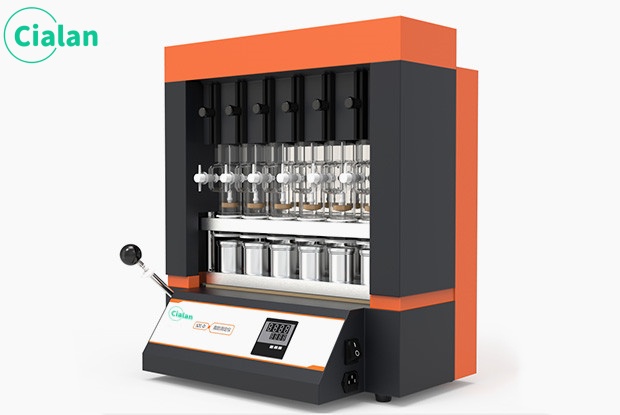
Functional features of fat analyzer.
1. Small size, fast heating in water bath, and even heating;
2. The entire series of instruments adopts glass ground joints to avoid the problem of rubber seals being deformed and leaking due to ether;
3. Digital display temperature control zone timing integrated high-integrated instrument, free and convenient control;
4. Safe and reliable equipment. The product has a built-in ether leakage monitoring system. The minimum detection limit is 90ppm (less than China’s occupational exposure limit). If ether leaks, there will be an audible and visual alarm;
5. Suitable for a variety of organic solvents with different boiling points, with a wide temperature control range, from room temperature +5°C to 300°C;
6. The relative error of the experimental results is less than 1%.
Heating extraction, solvent collection and cooling.

The function of fat analyzer.
1. The fat analyzer is mainly used to measure fat content by gravimetric method. It is a special equipment used to determine the quality determination index and fatty acid value of grains (including corn and rice). It is also suitable for the determination of fatty acid values of other grains and grain products. Fat can be dissolved in specific organic solvents. Through repeated extraction, the fat is finally separated, and then dried and weighed to calculate the fat content.
2. The fat meter can measure the crude fiber content in various grains, feeds, grains, foods and other agricultural and sideline products. However, the fiber meter on the market does not measure an exact chemical entity, but a kind of The general composition is mainly cellulose, with a small amount of hemicellulose and lignin. Nowadays, in substance testing, whether it is a fat meter, a crude fiber meter or a nitrogen, phosphorus and calcium meter, they are all ordinary and common testing instruments. The fat analyzer uses an electric hot plate for heating, which is fast, has an automatic recovery function, includes soaking and extraction processes, shortens the working time, and is more compact and beautiful in appearance.

The principle of fat analyzer.
1. Fat can be dissolved in ether solution. Soak the fat in ether and then heat it. The boiling point of ether is about 50°C. When the ether evaporates and passes through the cooling tube, it turns into an ether solution and fully contacts the fat sample to fully dissolve the sample. Repeat several times until the fat* is dissolved. The container containing the fat is then removed and the ether is recovered. Weigh and finally calculate the fat content in the sample. Because there are also pigments, volatile oils and other substances dissolved in ether, it is also called crude fat.
2. The fat analyzer measures fat content based on the Soxhlet extraction principle and the gravimetric method. That is, dissolve the fat in an organic solvent, use extraction method to separate the fat from the solvent, then dry it, weigh it, and calculate the fat content.

Functional features of fat analyzer.
1. Small size, fast heating in water bath, and even heating;
2. The entire series of instruments adopts glass ground joints to avoid the problem of rubber seals being deformed and leaking due to ether;
3. Digital display temperature control zone timing integrated high-integrated instrument, free and convenient control;
4. Safe and reliable equipment. The product has a built-in ether leakage monitoring system. The minimum detection limit is 90ppm (less than China’s occupational exposure limit). If ether leaks, there will be an audible and visual alarm;
5. Suitable for a variety of organic solvents with different boiling points, with a wide temperature control range, from room temperature +5°C to 300°C;
6. The relative error of the experimental results is less than 1%.


